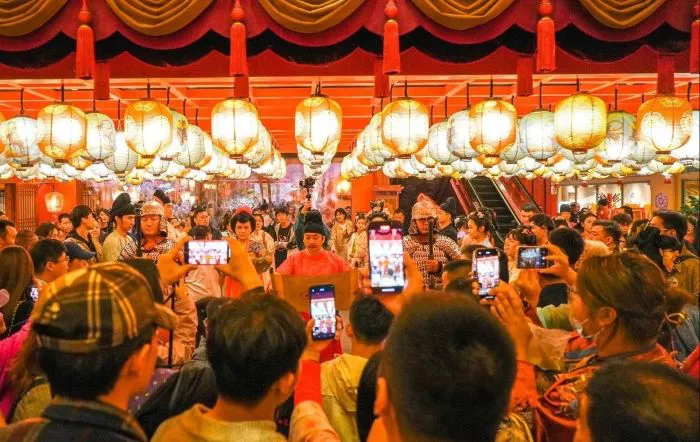In Xi’an’s Qujiang New District, an extraordinary cultural metamorphosis has occurred at the former Mandy Art Mall. Reborn as the “Twelve Hours of Chang’an” theme park, this 24,000-square-meter space now transports visitors to Tang Dynasty (618-907 AD) market streets, achieving what urban planners call “placemaking” at its finest. The project’s secret lies in its triple formula: leveraging hit TV drama IP, creating multi-sensory immersion, and focusing on grassroots Tang culture rather than imperial pomp.
From Struggling Mall to Cultural Phenomenon
The transformation addresses a stark contrast – while surrounded by iconic Tang landmarks like Giant Wild Goose Pagoda, the original mall attracted merely 1,600 daily visitors with under 100 yuan average spending. Developers Shaanxi Cultural Investment Group recognized the untapped potential, collaborating with culinary operator Yongxingfang and entertainment company Yueyue Culture to reinvent the space. Their masterstroke was choosing vibrant market life over palace grandeur, creating differentiated appeal amid Xi’an’s Tang-themed attractions.
Architectural Alchemy Turns Weaknesses to Strengths
The mall’s problematic layout – long corridors, scattered circulation, and excessive common areas – became assets through ingenious design. Designers created distinct cultural zones across three levels, using atrium height for spectacular performances like “Feast of Extreme Joy.” Augmented reality installations and 100+ daily interactive shows by costumed performers complete the time-travel illusion. Visitors exchange replica Tang currency “Kaiyuan Tongbao” for period costumes, artisan crafts, and street food, spending 3-5 hours on average.
Ripple Effects Across the Local Economy
The project’s impact extends far beyond its walls. Surrounding hanfu (traditional clothing) rental shops exploded from six to over 1,000, fueling Xi’an’s booming heritage photography industry. Nighttime economic activity flourishes with extended operating hours combining performances, dining, and retail. The park has generated 600+ jobs, including unique roles like cultural interpreters and heritage crafts demonstrators, while providing platforms for Shaanxi’s intangible cultural heritage practitioners.
With 4 million visitors and 30 billion online impressions since its 2022 opening, the project demonstrates how cultural IP can drive urban regeneration. Its success has earned national accolades including China’s “Best Cultural Tourism Innovation” award, proving that thoughtful heritage reinterpretation can achieve both commercial viability and authentic cultural transmission in modern cities.
Related Topic:
- “Cultural and Natural Heritage Day” Ignites Traditional Culture Craze
- Cover-More Travel Insurance Wins Big at 2025 WeMoney Travel Awards
- TTC Plans Major Investment to Strengthen Tour and Cruise Brands Worldwide

